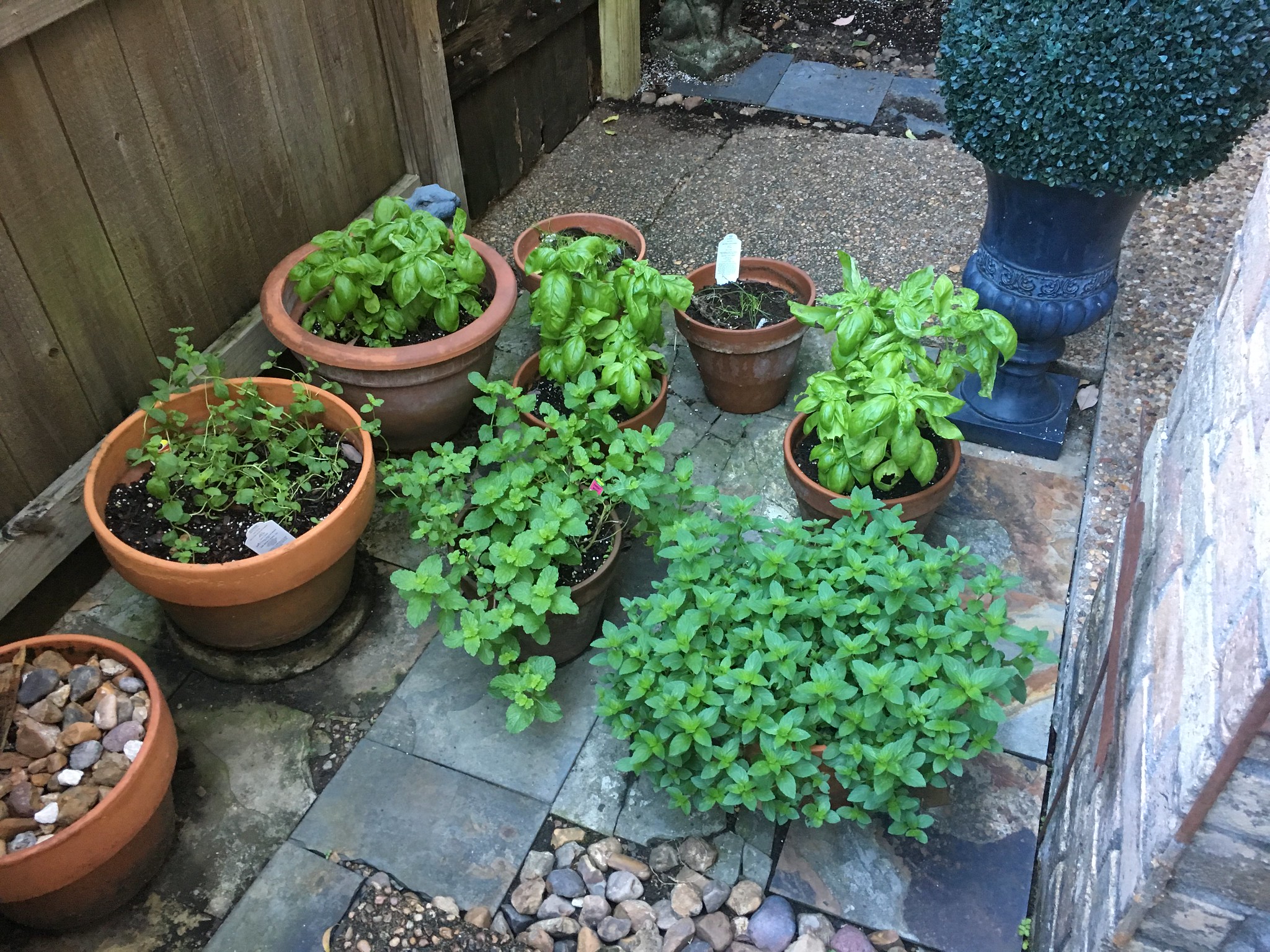The best herbs to grow in Colorado include lavender, oregano, rosemary, thyme, and basil. If you want to have the herb garden that you’ve always dreamed of, you’ll need to know a bit more about these herbs, the benefits that they offer, and the important elements that would cause these herbs to thrive.
A Closer Look at Growing Herbs in Colorado
Lavender, oregano, rosemary, thyme, and basil are herbs or flowering plants that don’t produce woody stems when they grow above ground. Each winter, these herbs die back to the ground to their perennial root system. Herbs are known and valued for their scent, flavor, and medicinal purposes.

Lavender
Lavender is one of the best herbs that grow well in the Centennial State. Although lavender may look half-dead to you in early spring, you’ll be pleasantly surprised by the month of April when the herb begins to show signs of new growth. Before you give in to the temptation of cutting it back, keep in mind that you’ll only end up killing the plant when you prune the stems below its points of new growth.
Oregano
Did you know that this herb could take various forms in terms of habit, hardiness, flavor, and growth? For instance, marjoram (Origanum majorana), which is known for its unparalleled sweet flavor, needs to be planted again each spring. Although the Italian oregano (O. x majoricum) may not be as sweet as majorana, it’s prized for its hardiness and it’s known to be a clumper.
Rosemary
A lot of people find it challenging to get their rosemary plants to live for several years. However, you can easily achieve this if you choose hardier rosemary varieties such as Arp and Hill Hardy and plant them in an optimal growing environment.
Thyme
Visiting bees in late spring find the little blue flowers of this highly-aromatic herb simply irresistible. Although green lemon thyme and golden lemon thyme are widely-used for their citrusy quality, both varieties don’t have the staying power that their counterparts have. If you’re trying to grow thyme in Colorado, be sure to cut them back in late summer in order to create new growth before winter comes.
Basil
If you’re planning to grow basil, be sure to successively sow them over the summer in containers only when nighttime temperatures consistently reach the 50s or above. In the first half of summer, basil tends to flower as it goes through its leafy stage.
You should begin to cut back its stems for harvesting as soon as the flower stalks appear and before its flavor turns bitter. When the cooler nights take place in early autumn, basil’s growth starts to decline. During this time, your basil should be ready for harvest.
Which Herb is Easiest to Grow?
Since thyme doesn’t need as much attention as other growing herbs do, it’s extremely easy to grow. However, it’s important to note that it needs to be planted a few weeks prior to the last spring frost. Thyme is an independent plant that only needs a few things to thrive – full sunlight, drier soil that drains, and a little fertilizer.
Can You Plant Supermarket Herbs?
Yes, you can. Just make sure that the herbs that you purchased from the supermarket still have their roots attached. As soon as you get home, be sure to place the supermarket herbs in the water and let the roots soak for about 24 hours.
Next, you can plant these herbs in well-draining potting soil that’s moist. Water the plant well. As soon as you see new growth, you can transplant them in your garden.
Best Reasons Why You Should Give Greenhouse Gardening a Try
Greenhouse gardening offers a lot of benefits including extended growing seasons, opportunities to produce a wide range of plant types, and protection from external threats.
You can extend your growing season
Unlike traditional outdoor gardening that highly depends on your area’s climatic conditions, greenhouse gardening promotes stronger plant growth within extended growing seasons. In other words, weather patterns won’t be able to limit plant growth inside the enclosure.
Setting up your own greenhouse means having the opportunity to use various techniques that can keep the temperature, moisture, and humidity inside the structure at stable levels, regardless of the weather outside. These techniques include the use of heating fans, man-made heaters, or thermal solar mass that can absorb, store, and release thermal heat.
You can produce a wide range of plant types
When you invest in a greenhouse, you’ll have the chance to provide a wide range of produce on the off-season. What’s more, greenhouse gardening also allows you to grow new flowers or produce that aren’t native to your area. Since a greenhouse gives you complete control of your plant’s growing environment, external elements won’t have to limit your gardening methods.
Protects your crops from external threats
Since you’ll be able to control what comes in and goes out of your greenhouse, you won’t have to worry about harsh weather conditions, varmints snacking on your crops, and seasonal pests.
The Takeaway
Now that you know about the best herbs to grow in Colorado, consider growing them in your very own greenhouse. If you think that greenhouse growing is the next practical step for your lifestyle, check out Krostrade’s top-quality greenhouses that are strong, durable, and long-lasting. Get in touch with us today or visit our website to learn more about our featured products.
